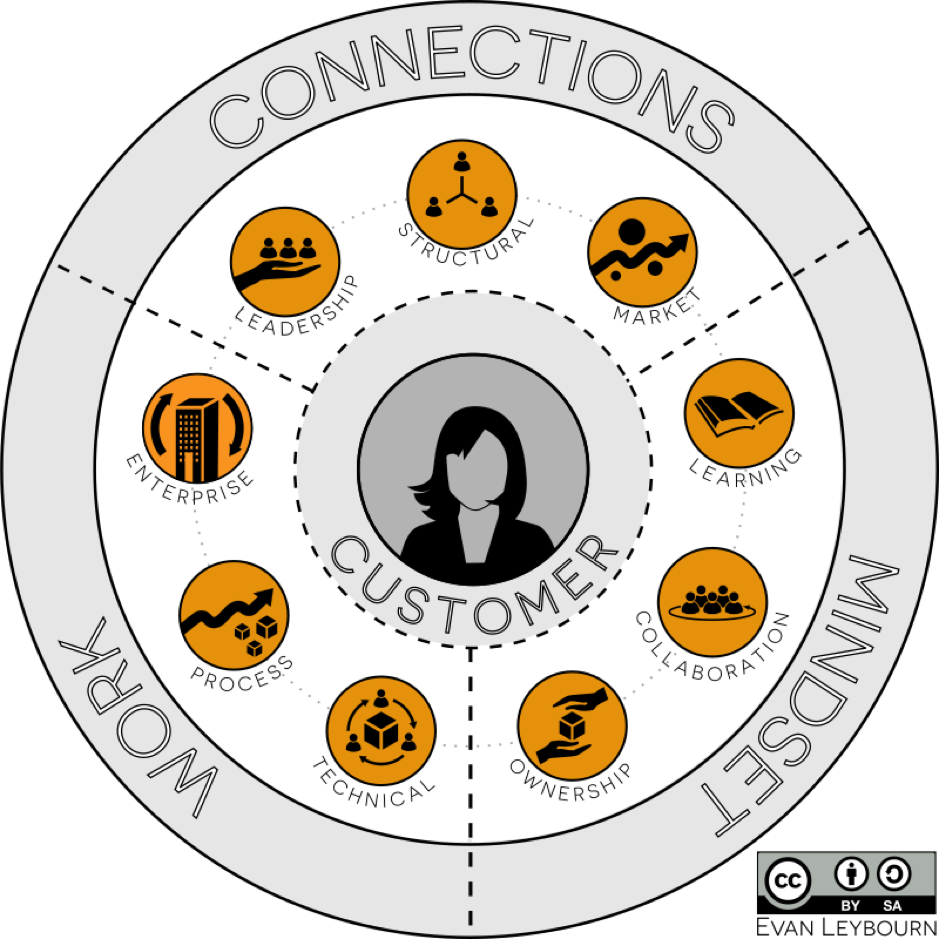By Evan Leybourn for Enlivening Edge Magazine
What is it about business agility that’s making everyone stop and pay attention these days? It’s not something particularly new; we can trace the current incarnation of business agility back at least 20 years. And if we incorporate similar approaches and mindsets from the military, we can trace it back centuries.
And it’s not that markets are changing; they’ve been doing that since Industrial Revolution. And it’s not even that companies are realising that empowered staff are more productive and loyal than their unempowered counterparts; Drucker and Deming were talking about that in the 60s, 70s, and 80s.
Perhaps it has something to do with the fact that all of this is happening faster today than ever before. Last month Business Insider reported that, in the US, chapter 11 bankruptcies are up 63%, the highest rate since 2011. Perhaps it’s also something to do with the fact that disruption, despite the term having been abused and overused, is impacting every industry. Ten years ago, none of the banks would have listed Google or Apple or Alibaba as a competitor, and now they all do.
So, what is business agility? Simply put, it is the ability for an organisation to thrive in an unpredictable and uncertain market. Yet, a sentence like that is so generic as to be meaningless.
Instead let’s go deeper and look at what makes up business agility. What do organisations need to change about themselves to thrive?
There is a model called the Domains of Business Agility. I call this the “don’t forget” model. Why? Because rather than telling you how to do something (like a framework), this model tells you what not to forget when embarking on a business agility journey.
This model consists of 9 interacting domains within 3 dimensions, all centred around the customer. Each domain describes one key characteristics of an agile, adaptive, and responsive organisation. No single domain is more important than any other and they are all equal, necessary, interrelated, and intertwined.
 In fact, one of the biggest problems that organisations face when they begin a “transformation” is that they focus on one or two domains rather than treating their organisation as a complex adaptive system. While there are certainly benefits that can be achieved, overall there are clear diminishing returns from this approach.
In fact, one of the biggest problems that organisations face when they begin a “transformation” is that they focus on one or two domains rather than treating their organisation as a complex adaptive system. While there are certainly benefits that can be achieved, overall there are clear diminishing returns from this approach.
We’ve seen this in the Agile world for the last 20 years. Companies started by adopting Agile practices (like Scrum and XP) in their software teams but then completely forgetting that that is only one part of the whole system. Without building agility in finance, HR or marketing, they limit the benefits of the very transformation they have set out to run.
At the centre of this model is the customer. When we started designing this model there were a lot of arguments about whether shareholders, employees, or the customer should be at the heart. And there are good cases to be made for all of them.
However, we decided that the customer should be at the centre because they are the purpose for your organisation.
Shareholders may own the company, and employees may be the most important thing to making it work, but the customer is why you are in business. Unfortunately, many companies have forgotten this. Every KPI and entry in the corporate scorecard relates to financial health. There might be a token measure around customer satisfaction, but nobody gets fired for that – whereas if you do not meet your sales targets you’re likely out by the end of next quarter.
There is a fantastic quote by Frederic Laloux: “Profit is like the air we breathe. We need air to live, but we don’t live to breathe.” (page 197)
The first dimension is Work which governs the ways of working in an organisation. Within Work, the first domain is “Technical Agility”: the ways of working for an individual to create something in an adaptable and agile way. Then “Process Agility”: the agility that exists in an entire value chain. And “Enterprise Agility”: the agility that exists across the organisation and within the interplay between divisions and teams.
The second dimension is Connections which governs the relationships that form inside and outside of an organisation. Within Connections, the First domain is “Leadership Agility”: the relationships that individuals form with authority. Then “Structural Agility”: the relationships that form between teams – with companies moving from hierarchical to network-based organisations (either formal or informal). And last “Market Agility”: the agility that is needed within the marketplace – from your suppliers upstream and your distributors downstream.
The third and final dimension is Mindset which defines the key characteristics and culture within an agile organisation. Within Mindset, the first domain is a “Learning Mindset”: the culture of continuous improvement and personal growth. The second domain is “Collaboration Mindset”: the culture of openness, helping, and sharing. And finally, the last domain is “Ownership Mindset”: the culture of taking pride and accountability in your work.
Taken together this model looks at the organisation as a living system.
If an organisation wants to be able to adapt within the dynamic, unpredictable, and complex market that exists today, then they need to operate like a living organism rather than a mechanistic construct. This is Business Agility.
 Evan Leybourn is the Founder and CEO of the Business Agility Institute, an international membership body to both champion and support the next generation of organisations: companies that are agile, innovative, and dynamic—perfectly designed to thrive in today’s unpredictable markets.
Evan Leybourn is the Founder and CEO of the Business Agility Institute, an international membership body to both champion and support the next generation of organisations: companies that are agile, innovative, and dynamic—perfectly designed to thrive in today’s unpredictable markets.
His experience while holding senior leadership and board positions in both private industry and government has driven his work in business agility, and he regularly speaks on these topics at local and international industry conferences.
As well as leading the Business Agility Institute, Evan is also the author of Directing the Agile Organisation and will soon be publishing his next book on #noprojects.
Join a global community of next-generation agile organizations comprised of industry leaders, growth companies and start-ups. Become a member today. https://businessagility.institute/




